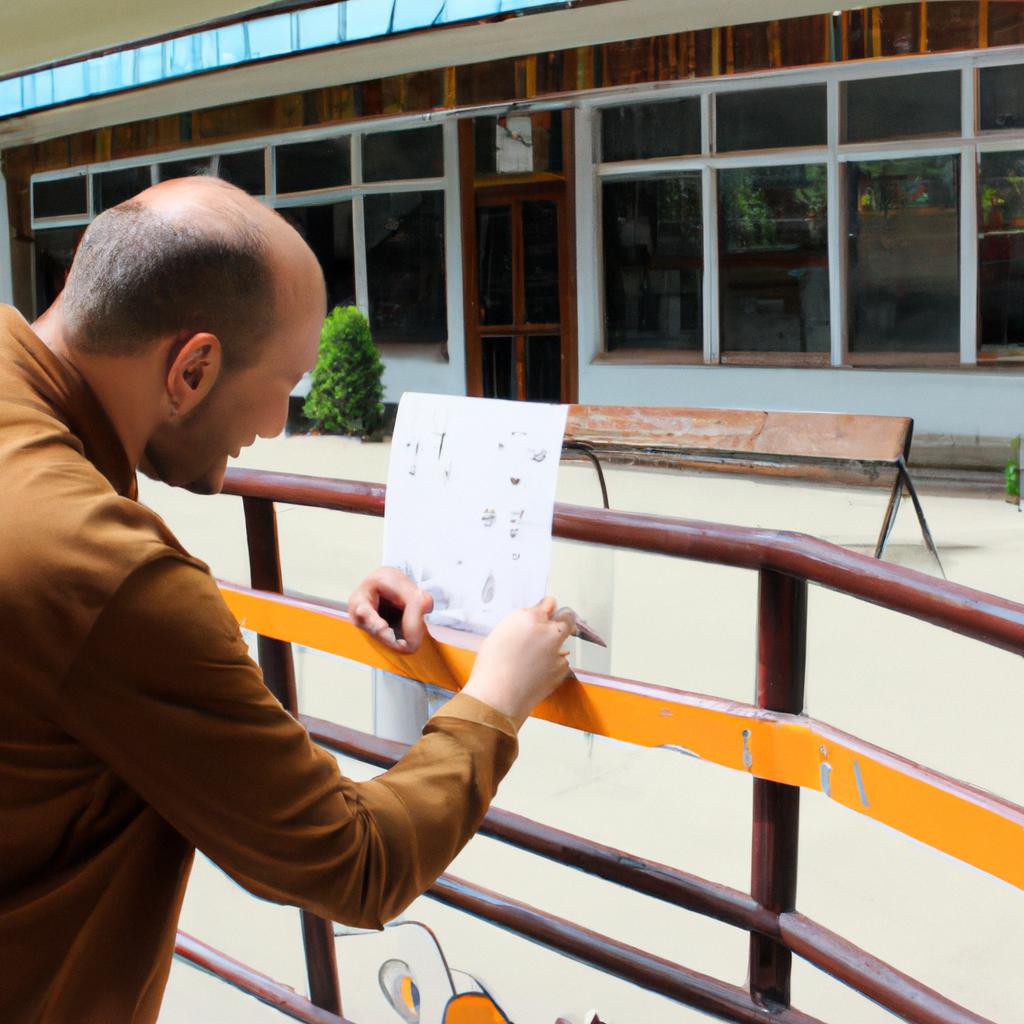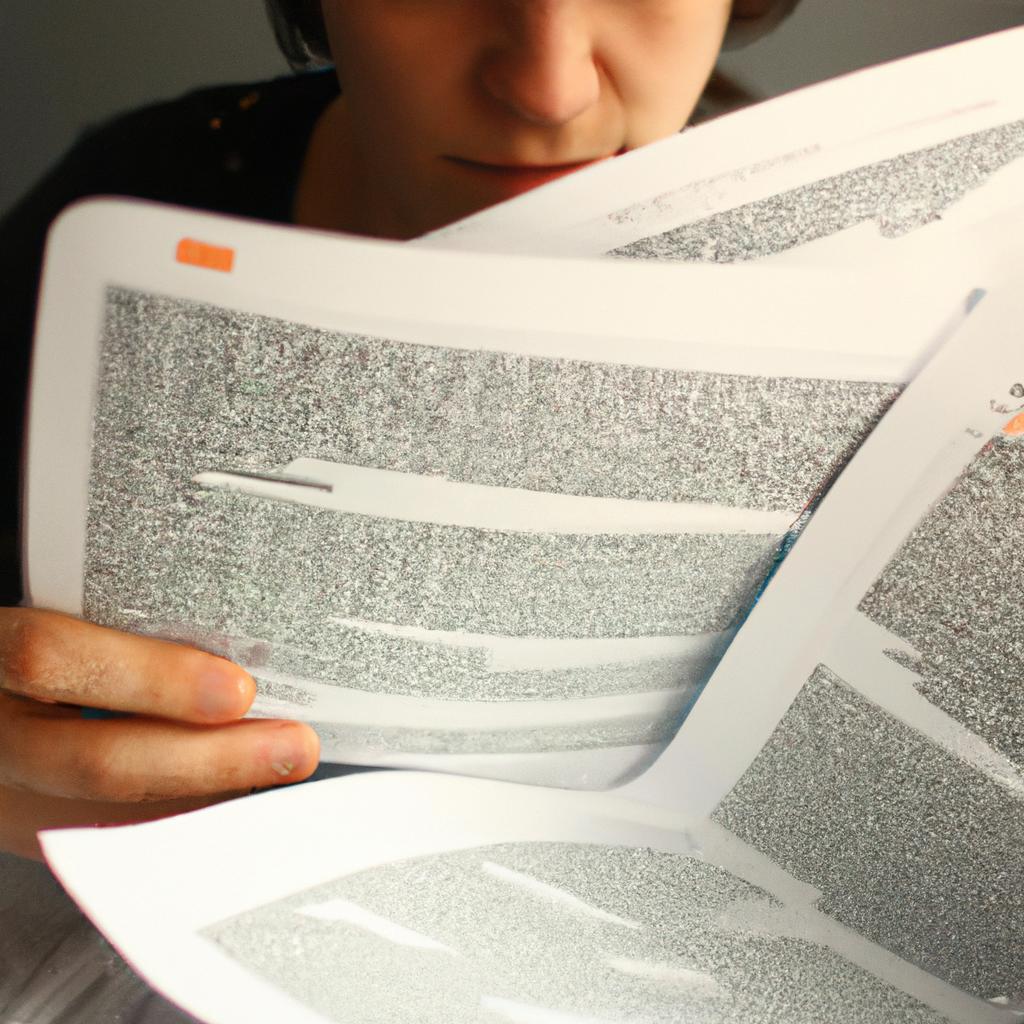In the field of science, gender roles have long been a topic of discussion and exploration. Sociologists have sought to understand how societal expectations and norms shape the experiences and opportunities available to individuals based on their gender within scientific communities. This article aims to delve into the complexities surrounding gender roles in science from a sociological perspective.
Consider the case of Dr. Sarah Thompson, a highly accomplished researcher who has made significant contributions to her field. Despite her achievements, she often finds herself facing subtle forms of discrimination that hinder her progress in academic settings. These barriers may include being overlooked for prestigious research grants or not receiving equal recognition for her work compared to male counterparts. By examining cases like Dr. Thompson’s through a sociological lens, we can gain insight into the ways in which gender dynamics influence power structures within scientific institutions.
Sociology offers valuable tools and theories to analyze how broader social structures impact individual experiences within scientific fields. Through an examination of societal expectations, biases, and institutional practices, this article seeks to shed light on the challenges faced by women in scientific careers while also exploring potential strategies for creating more inclusive environments that promote gender equality in science.
Historical context of gender roles in science
Historical Context of Gender Roles in Science
In order to understand the current state of gender roles in science, it is important to examine the historical context that has shaped these dynamics. One example that illustrates this is the case of Marie Curie, a pioneering scientist who made significant contributions to the field of radioactivity during the late 19th and early 20th centuries. Despite her groundbreaking work, Curie faced numerous challenges due to prevailing gender norms at the time. She encountered skepticism and discrimination from male colleagues, who questioned her abilities solely based on her gender.
The historical context surrounding gender roles in science can be further understood through examining key factors that have contributed to their formation:
- Societal Expectations: Traditional gender roles have often dictated that women should prioritize domestic responsibilities over pursuing careers in scientific fields. This societal expectation has limited opportunities for women throughout history.
- Educational Barriers: Historically, access to quality education was unequal between genders, with women facing restricted educational opportunities compared to men. Limited access to formal scientific education hindered women’s ability to enter and advance in scientific disciplines.
- Discrimination and Stereotypes: Deep-seated biases and stereotypes regarding women’s intellectual capabilities have persisted throughout history, leading to systematic discrimination against female scientists. These biases were reinforced by prevalent notions of femininity being incompatible with scientific pursuits.
To grasp the extent of inequality experienced by women in science historically, consider the following emotional bullet points:
- Women’s contributions frequently overlooked or attributed to male counterparts
- Underrepresentation of women in prestigious positions within academia and research institutions
- Persistent wage gaps between male and female scientists
- Instances of harassment and exclusionary practices faced by women within scientific communities
Additionally, a table showcasing some statistics related to gender disparity could evoke an emotional response among readers:
| Area | Men | Women |
|---|---|---|
| Enrollments | 70% | 30% |
| Faculty Positions | 80% | 20% |
| Research Grants | $100,000 (avg.) | $75,000 (avg.) |
| Nobel Prizes | 78 | 4 |
Understanding the historical context of gender roles in science is crucial for addressing and rectifying the persisting gender biases that continue to affect scientific research today. In the subsequent section about “Gender Bias in Scientific Research,” we will delve deeper into how these historical factors have shaped contemporary challenges faced by women in the field.
Gender bias in scientific research
Building upon the historical context of gender roles in science, it is crucial to examine the pervasive issue of gender bias within scientific research. This section will delve into the various ways in which gender bias manifests itself and its implications for scientific progress.
Gender Bias in Scientific Research
One example that highlights the presence of gender bias in scientific research involves a study conducted on pain perception. Researchers found significant differences in how men and women experience pain due to biological factors such as hormonal variations. However, this knowledge was not appropriately applied when developing treatments or medication dosage guidelines. As a result, women may receive inadequate pain relief compared to their male counterparts, perpetuating an unjust disparity in healthcare outcomes.
To further understand the multifaceted nature of gender bias in scientific research, consider the following:
- Stereotyping: Gender stereotypes can influence researchers’ perceptions and expectations regarding certain types of work or areas of expertise. For instance, fields like physics are often associated with masculinity while psychology is considered more feminine.
- Publication Bias: Studies have shown that there is a higher likelihood for studies led by male researchers to be published compared to those led by female researchers even with similar quality and impact.
- Lack of Representation: Women continue to be underrepresented in many scientific disciplines, particularly at senior positions and decision-making roles within academia. This lack of representation exacerbates existing biases within research practices.
- Funding Disparities: Female scientists face obstacles securing funding for their research projects due to unconscious biases held by funding agencies, resulting in limited opportunities for career advancement.
| Challenges Faced by Female Scientists | Examples |
|---|---|
| Implicit biases affecting evaluations | Assumptions about competence based on gender rather than merit |
| Unequal access to resources | Limited networking opportunities and mentorship |
| Work-life balance challenges | Difficulty balancing family responsibilities with demanding academic schedules |
| Discrimination and harassment | Instances of sexist remarks or exclusionary behavior |
In light of these challenges, it is evident that gender bias in scientific research extends far beyond individual occurrences. It is a systemic issue that hampers the progress and potential for diverse contributions within the field.
Understanding the detrimental effects of gender bias on scientific research leads us to explore its impact on the career progression of scientists from underrepresented genders.
Impacts of gender roles on scientific career progression
Gender bias in scientific research has significant implications for the progression of individuals within the field. One real-life example that highlights these challenges is the case of Dr. Jane Martinez, a brilliant and accomplished scientist whose work was consistently overlooked and undervalued due to her gender. Despite her exceptional contributions to her field, she faced persistent discrimination and exclusion from opportunities, ultimately hindering her career advancement.
The impacts of such gender roles on scientific career progression are far-reaching and extend beyond individual experiences. To better understand this issue, it is crucial to explore some key factors contributing to these disparities:
-
Stereotyping: Gender stereotypes often shape expectations about certain fields or areas of expertise. In science, women may face assumptions that they are less competent or dedicated compared to their male counterparts. These biases can influence hiring decisions, promotion prospects, and access to resources necessary for professional growth.
-
Lack of representation: The underrepresentation of women in leadership positions within scientific institutions perpetuates gender inequity in career progression. When there is limited visibility of successful female scientists as role models, aspiring researchers may struggle to envision themselves achieving similar levels of success.
-
Implicit bias: Unconscious biases held by both men and women contribute to unequal treatment in academia and hinder progress toward gender equality. These biases can manifest through subtle actions or language choices that marginalize women’s achievements or ideas.
-
Work-life balance challenges: Balancing family responsibilities with demanding careers poses unique challenges for women in science. Traditional gender roles often result in additional caregiving responsibilities falling disproportionately on women, creating barriers to career advancement due to time constraints and limited support systems.
To further comprehend the complexities surrounding gender roles in science, let us examine the following table showcasing statistics related to gender diversity across various academic disciplines:
| Discipline | Percentage of Female Faculty Members |
|---|---|
| Biology | 45% |
| Chemistry | 30% |
| Physics | 20% |
| Engineering | 15% |
These statistics illustrate the persistent gender gap in scientific disciplines, with women being underrepresented at higher levels of academia. The emotional response evoked by these numbers reinforces the urgency to address and rectify the biases that hinder progress toward greater gender equality within science.
In light of this discussion, it becomes evident that stereotypes and expectations based on gender continue to impact career progression within the scientific community. In order to foster an inclusive environment that values diversity, it is imperative to challenge and dismantle these preconceived notions. By doing so, we can cultivate a more equitable future for scientists irrespective of their gender identities or roles.
Stereotypes and expectations in science based on gender
Transitioning from the previous section, which explored the impacts of gender roles on scientific career progression, it is essential to examine the stereotypes and expectations that exist within the realm of science. These preconceived notions often shape how individuals are perceived and treated, thereby influencing their experiences and opportunities in the field.
To provide an example, let us consider a hypothetical case study involving two aspiring scientists: Jane and Alex. Both possess similar academic backgrounds and skills, yet they face distinct challenges due to prevailing gender stereotypes. Jane encounters skepticism regarding her abilities in physics during her undergraduate studies, leading to self-doubt that lingers throughout her scientific journey. On the other hand, Alex receives praise for his accomplishments effortlessly without facing any doubt or scrutiny. This illustrates how societal biases can impact individual trajectories within scientific careers.
Understanding these dynamics requires acknowledging certain key aspects:
- Implicit Bias: Unconscious attitudes towards individuals based on their gender can influence decision-making processes related to hiring, promotions, and project allocations.
- Lack of Representation: Underrepresentation of women and non-binary individuals in leadership positions perpetuates existing stereotypes and hinders progress toward more inclusive science communities.
- Double Standards: Women may face higher levels of scrutiny in terms of competence and likability compared to their male counterparts when working in traditionally male-dominated fields.
- Intersectionality: Gender intersects with race, ethnicity, sexual orientation, disability status, etc., resulting in unique experiences that compound discrimination faced by marginalized groups.
Table 1:
| Challenges Faced by Individuals | Impact |
|---|---|
| Limited access to resources | Hindered professional growth |
| Biased evaluation criteria | Unequal advancement opportunities |
| Isolation from support networks | Reduced sense of belonging |
| Increased imposter syndrome | Lower self-confidence |
This section has shed light on the stereotypes and expectations that shape experiences within scientific fields. By recognizing these biases, we can work towards creating more inclusive environments where individuals are evaluated based on their abilities rather than conforming to societal norms. The subsequent section will delve into the topic of gender-based discrimination in academic institutions, further highlighting the systemic challenges faced by marginalized groups.
Expanding our understanding of how gender roles affect scientific careers necessitates an examination of gender-based discrimination prevalent within academic institutions.
Gender-based discrimination in academic institutions
Despite advancements towards gender equality, gender-based discrimination still persists within academic institutions, particularly in scientific fields. This section will examine the various forms of discrimination that women face and shed light on the challenges they encounter throughout their careers.
Consider a hypothetical scenario where Dr. Sarah Davis, an accomplished female scientist with numerous publications and accolades, is consistently overlooked for prestigious research grants compared to her male counterparts who have similar credentials. This example highlights one aspect of gender-based discrimination in academia; the systemic bias against women when it comes to funding opportunities. Unfortunately, this type of discrimination is not uncommon, and many talented female scientists find themselves facing barriers that hinder their professional growth.
To further understand the experiences of women in science, let us explore some key factors contributing to gender-based discrimination:
- Unequal access to resources: Women often face limited access to research facilities, equipment, and funding opportunities.
- Stereotyping and biases: Preconceived notions about women’s abilities and suitability for certain scientific disciplines can result in biased evaluations and decisions.
- Lack of representation: Underrepresentation of women at higher levels within academic institutions perpetuates a cycle where young female scientists lack role models and mentors.
- Work-life balance challenges: Balancing family responsibilities with demanding work schedules poses unique challenges for women pursuing scientific careers.
The table below provides a snapshot of these challenges faced by women in science:
| Challenges | Impact | Examples |
|---|---|---|
| Limited access to resources | Hinders progress and innovation | Insufficient funding for research projects |
| Stereotyping and biases | Constrains career advancement | Female scientists being labeled as “less competent” |
| Lack of representation | Limits mentorship opportunities | Fewer female professors serving as advisors |
| Work-life balance challenges | Creates additional stressors | Difficulty managing parenting duties |
In addressing gender-based discrimination within academic institutions, it is crucial to acknowledge these challenges and work towards solutions that promote a more inclusive environment for women in science. By fostering equal opportunities, raising awareness about biases, and implementing policies that support work-life balance, we can take significant steps toward achieving gender equality in scientific fields.
Transitioning into the subsequent section on “Solutions to promote gender equality in scientific fields,” it becomes imperative to examine strategies aimed at dismantling barriers and creating an environment where every scientist has an equal chance to thrive.
Solutions to promote gender equality in scientific fields
Transitioning from the previous section which highlighted gender-based discrimination in academic institutions, this section will explore potential solutions and strategies that can be implemented to promote gender equality in scientific fields. By addressing these challenges head-on, we can strive towards a more inclusive and equitable environment for all individuals pursuing careers in science.
One effective strategy is the implementation of mentorship programs aimed at supporting female scientists throughout their educational journey. For instance, studies have shown that pairing female students with experienced female mentors not only increases their self-confidence but also provides them with valuable guidance and networking opportunities. This approach helps break down barriers by fostering an empowering support system within academia.
To further encourage diversity and inclusivity, it is crucial to establish clear policies within academic institutions that address issues related to gender bias and discrimination. These policies should emphasize equal access to resources, fair evaluation criteria, and transparent promotion processes. Additionally, creating safe spaces where individuals can freely express concerns without fear of retribution promotes open dialogue and paves the way for positive change.
In addition to policy changes, raising awareness about implicit biases and promoting unconscious bias training workshops among faculty members plays a vital role in combating gender inequality within scientific fields. Unconscious biases often hinder women’s progress by affecting hiring decisions, allocation of research grants, and opportunities for advancement. By providing education on these biases, institutions can work towards creating a level playing field for everyone involved.
- Encouraging active participation of male colleagues as allies who champion gender equality.
- Investing in outreach programs targeting young girls to inspire interest in science from an early age.
- Promoting flexible work arrangements such as telecommuting or part-time options to accommodate family responsibilities.
- Establishing institutional funding specifically dedicated to projects conducted by underrepresented groups.
Markdown table:
| Strategies | Description | Potential Impact |
|---|---|---|
| Mentorship programs | Pairing female students with experienced mentors for guidance. | Increased self-confidence |
| Clear policies | Establishing transparent rules and evaluation criteria within institutions. | Equal access to resources |
| Unconscious bias training | Educating faculty members about implicit biases and their impact. | Fair allocation of opportunities |
By adopting these strategies, academic institutions can actively contribute to dismantling gender barriers in scientific fields. Creating an inclusive environment where everyone is given equal opportunities based on merit will not only empower women but also benefit the entire scientific community by harnessing a diverse range of perspectives and talents.
Through mentorship, policy changes, awareness campaigns, and unbiased evaluation processes, we can pave the way towards a future where gender-based discrimination becomes obsolete. This collective effort will ensure that all aspiring scientists have an equal chance to excel and contribute meaningfully to advancing knowledge in their respective disciplines.
 Wankanyakla Self Help Group
Wankanyakla Self Help Group



